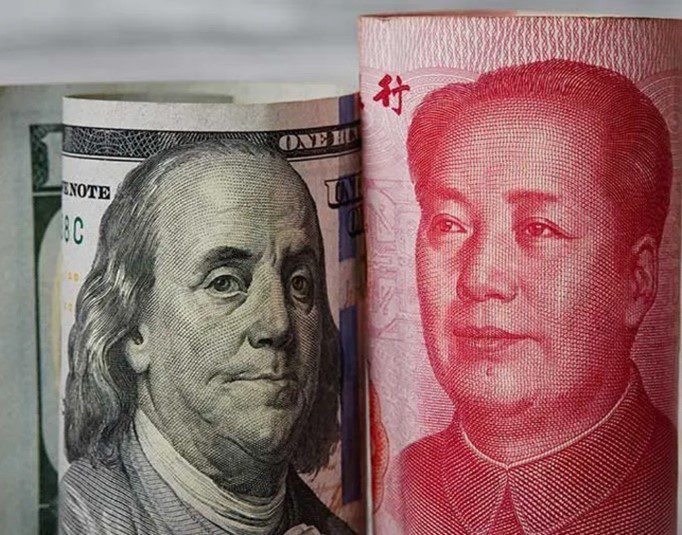The new display industry in China has become a fast-growing and lucrative industry, reaching millions of consumers worldwide. In 2020, the revenue of China’s new display industry hit RMB446 billion (about USD69.4 billion), accounting for 40.3 percent of the world’s total. It, thus, places China’s new display industry in first place worldwide.
Have a look at our previous article on Consumer Electronics Industry Recovery in China
In the past, China’s new display industry had been called “less screen” for the heavy importation of display panels (about USD50 billion annually) and less internal production. As the industry hits the RMB440 billion mark and continually grows, China says goodbye to the “less screen era” and now boasts of being the world leader in terms of new display production capacity.
What belongs to the new display industry?
In a nutshell, the new display industry is composed of digital solutions that improve our dining and shopping experiences. It can be segmented into different types:
- Display (LCD, OLED)
- Resolution (8K, 4K, HD)
- Application (Smartphones and Tablets, PC and Laptop, Television)
- Geography
Over the years, the industry’s technology evolved immensely and now boasts of higher resolutions, lower power consumption, and even transparent displays. The industry is further developing different technologies to cater to the fast-changing demand for advanced technology such as OLED, PMOLED, rollable transparent displays, and augmented displays.
Display trends
Displays enable consumers to view the content for various purposes such as:
- Entertainment;
- Consumer electronics;
- Personal computers;
- Mobile devices;
- Medical equipment;
- Transportation display and utility; and
- Industrial equipment.
Consumers often confuse LCD with OLED. For one, the liquid crystal display (LCD) has lighting coming from the back of the screen, or “backlight”. OLED, on the other hand, stands for “organic light-emitting diode”. Each pixel on an OLED screen lights up on its own unlike the pixels in an LCD that are lighted from behind. LCD currently dominates the industry because it is cheap to manufacture and provides acceptable picture quality. But according to reviews at CNET, OLED has overall better picture quality, largely because of the brilliant contrast ratio.
Types of displays
-
OLED technology
OLED technology is high in demand because it enables bright, thin, and efficient displays and lighting panels to be used in various industries and purposes. Mobile devices, TVs, lighting fixtures, and some laptops currently make use of this technology. They provide better image quality and can be made transparent and flexible, unlike their antiquated counterparts such as LCD and Plasma displays.
OLEDs are expected to dominate the industry and replace existing technologies. R&D efforts focusing on OLED transparent displays are needed to meet the dynamic demand for these displays from head-mounted display vendors.
-
Heads-up display
Head-mounted display devices are in demand in the automotive industry, military and defense, and the Augmented Reality/Virtual Reality (AR/VR) industry. The revenue prospects of the AR/VR industry are quite strong at above USD45 billion in sales of headset hardware by 2021.
-
Transparent screens
A device with a transparent display offers a much higher resolution (and displays) for a more realistic AR/VR experience. This provides a more immersive experience to customers and consumers, together with higher-quality head-mounted displays, high-quality content, and functionality improvements. The new technology on some luxury car brands uses transparent display on the dashboard-mounted display overlaying graphics using images from camera footages around the car.
Market potential and investment opportunities for the new display industry
As mentioned above, China is saying goodbye to the “less screen era”. Production and innovation are now prevalent within the country, rather than being outsourced or imported from outside territories. And despite the fast-paced evolution of modern technology, the golden era for the electronics industry has just begun. China, which currently dominates several industries including the new display industry, has numerous market opportunities in store.
The expansion of the market players in the industry is inclined towards acquiring existing facilities. Growing demands for smart TVs and smartphones have increased the global capacity for LCDs. However, China takes into consideration the excesses in the market. Hence, it prompts the government to urge manufacturers and local governments to shift focus to OLED panels (plasma screens have long been outdated).
Related new display industry regulations
-
Exemption from import tax
From January 1, 2021, to December 31, 2030, production enterprises that cannot produce their raw materials and consumables are exempt from import duties. These enterprises include those that import production raw materials, consumables and purification room supporting systems, production equipment (including imported and domestic equipment), spare parts, and key raw materials for the new display industry. These items include target materials, photolithography, mask plate, polarizing film, and color filter film.
According to Caishui (2021) No. 19, three departments will manage in due course the adjustments of the above-mentioned key raw materials and spare part types.
- Ministry of Finance
- General Administration of Customs
- General Administration of Taxation
-
Import VAT
From January 1, 2021, to December 31, 2030, enterprises undertaking major projects for new display devices shall import new equipment, provide customs-approved tax guarantees for unpaid taxes, in addition to the following documents:
- Import catalogues that are not exempt from tax exemption for domestic investment projects;
- The catalogue of imported goods not exempt from tax exemption for foreign investment projects; and
- The catalogue of major technical equipment and products not exempt from tax exemption.
Enterprises shall pay import VAT in installments within each month for 6 years or 72 consecutive months after the import of the first equipment. Moreover, they cannot refund the respective percentage of VAT paid since the date of the said import. During the 6 years, the Customs cannot impose late fees on taxes allowable for installment payments.
Conclusion
China has not just moved away from the “less screen era” but rather reversed it. By dominating the global scene on new displays, the industry allows sufficient supply to manufacturing enterprises in China as well as to other countries. This also allows for expansion that lets foreign investors enter the Chinese markets. This, paired with government subsidies allows higher production and different innovations to be achieved.
Contact us
S.J. Grand provides advisory and support on the business set up as well as tax and accountancy services for foreign-invested companies in China. We assist foreign companies with tax optimization strategies to take advantage of China’s various preferential policies. Contact us to get you started.
Moreover, we have been at the forefront of promoting full automation of business operations, especially for startups and SMEs. We have introduced our Cloud-based advanced solution, Kwikdroid, to make business transactions easier with us, no matter what type or size of the company. Visit our Kwikdroid page to learn more about the services we offer.
You may be interested to read about how to manage your company remotely using the advantages of Kwikdroid. Check it out!







